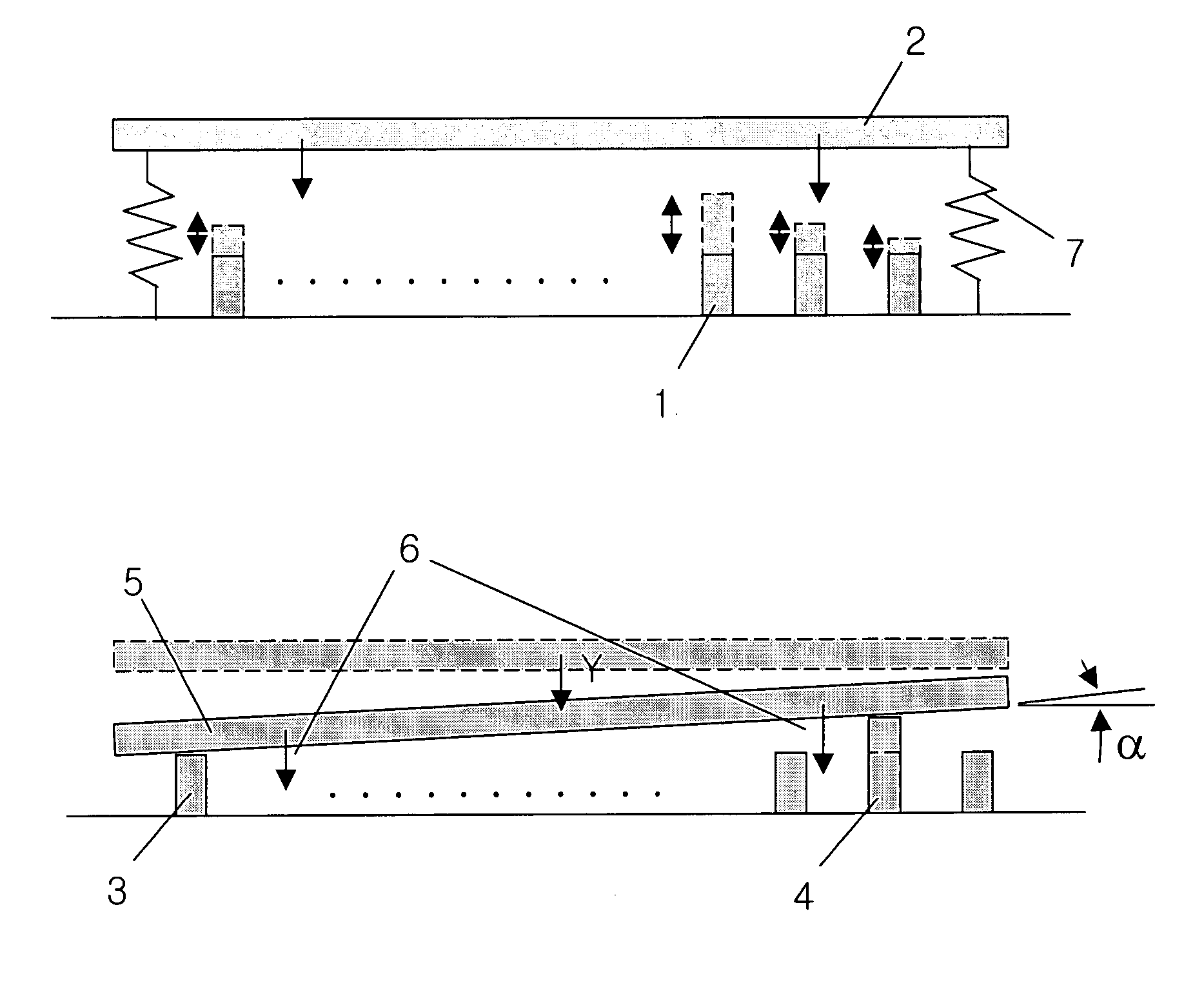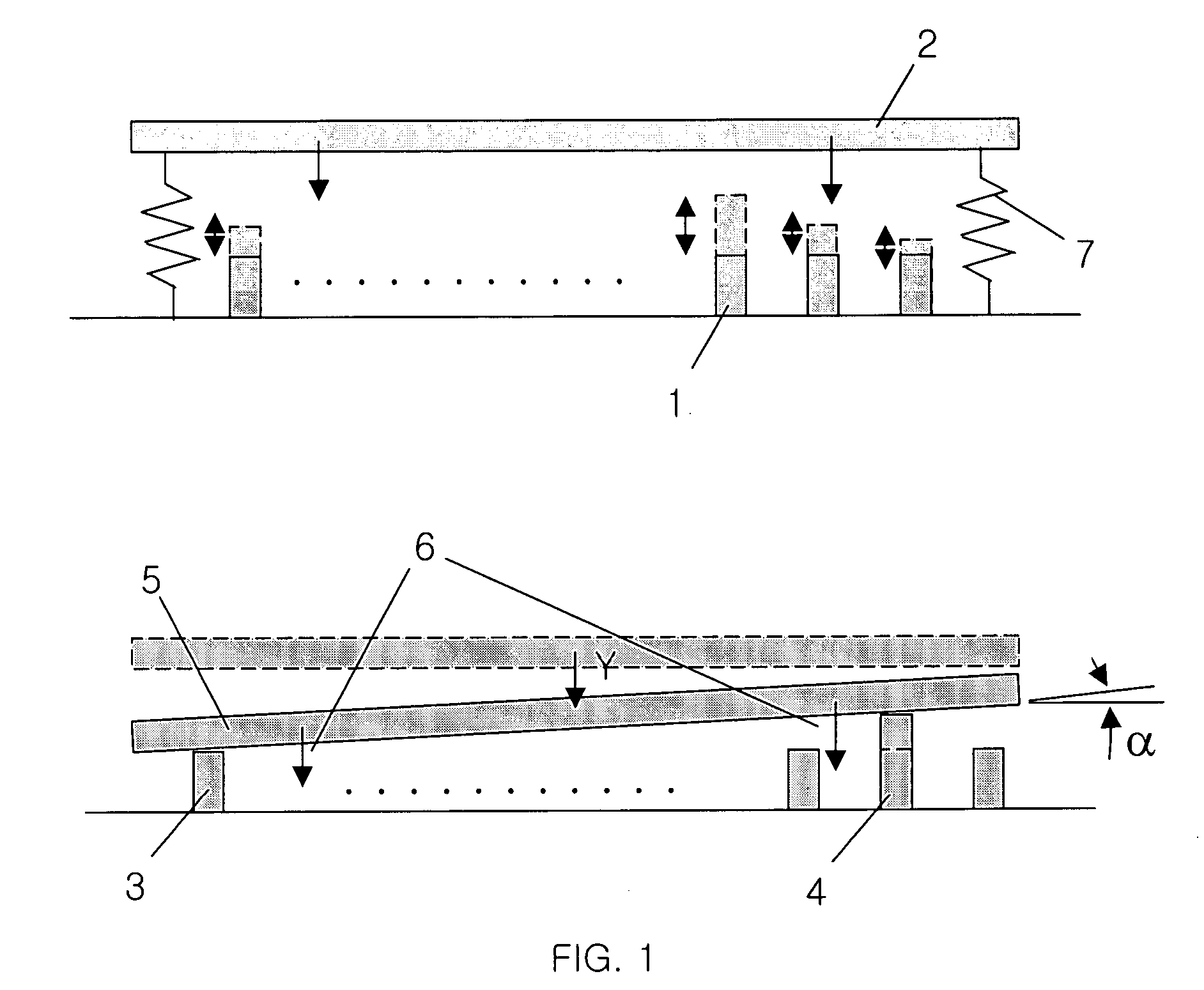Discretely controlled micromirror with multi-level positions
- Summary
- Abstract
- Description
- Claims
- Application Information
AI Technical Summary
Benefits of technology
Problems solved by technology
Method used
Image
Examples
Embodiment Construction
[0061]FIG. 1 shows the concept of DCM with the variable supporters 1. The variable supporter discretely controlled micromirror (VSDCM) use supporters 1 providing various gaps between the micromirror 2 and substrate 8. The supporters 1 are located under the micromirror 2. Translation and rotation of the VSDCM are determined by combination of the gaps, which are determined by variable supporters 3, 4 that the micromirror 5 rests. The gaps determined by the variable supporters are controlled digitally or discretely and the micromirror rests on the controlled supporters 3, 4 by attractive force 6. Therefore, the gaps provided by the supporters determine translation and / or rotation of the micromirror. Gap variation by the supporters is determined by digital or discrete motion of the supporters and the motions are controlled by electrostatic force. Digital voltage or discrete voltage operation is preferable method to control the electrostatic force. The position of micromirror 5 is restor...
PUM
 Login to View More
Login to View More Abstract
Description
Claims
Application Information
 Login to View More
Login to View More - R&D
- Intellectual Property
- Life Sciences
- Materials
- Tech Scout
- Unparalleled Data Quality
- Higher Quality Content
- 60% Fewer Hallucinations
Browse by: Latest US Patents, China's latest patents, Technical Efficacy Thesaurus, Application Domain, Technology Topic, Popular Technical Reports.
© 2025 PatSnap. All rights reserved.Legal|Privacy policy|Modern Slavery Act Transparency Statement|Sitemap|About US| Contact US: help@patsnap.com



